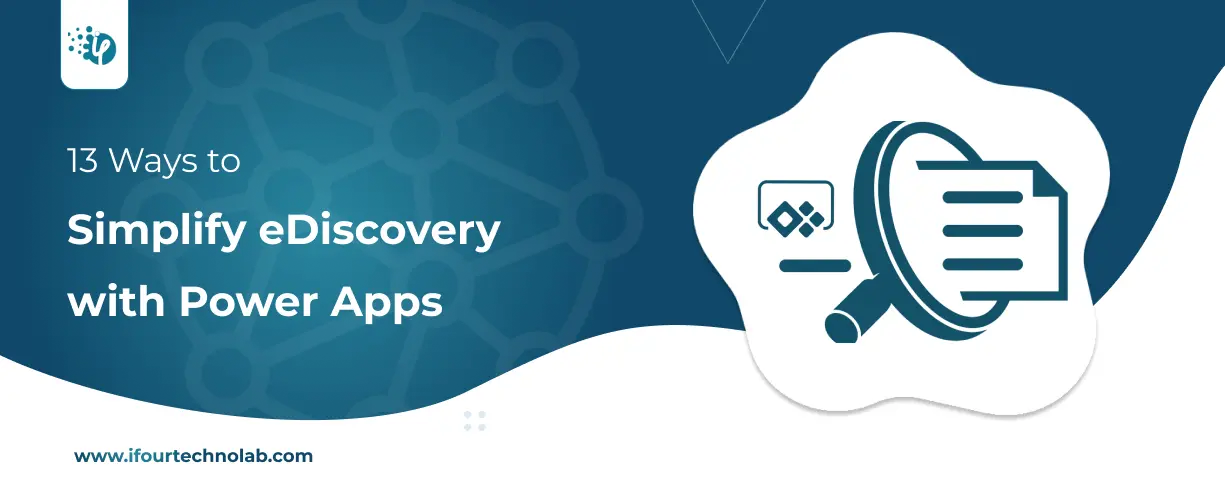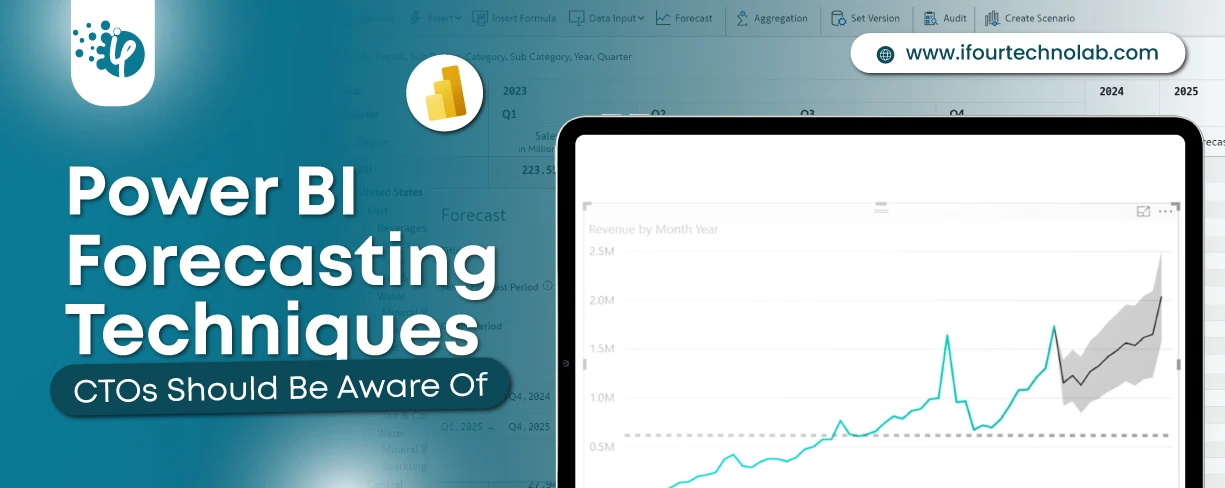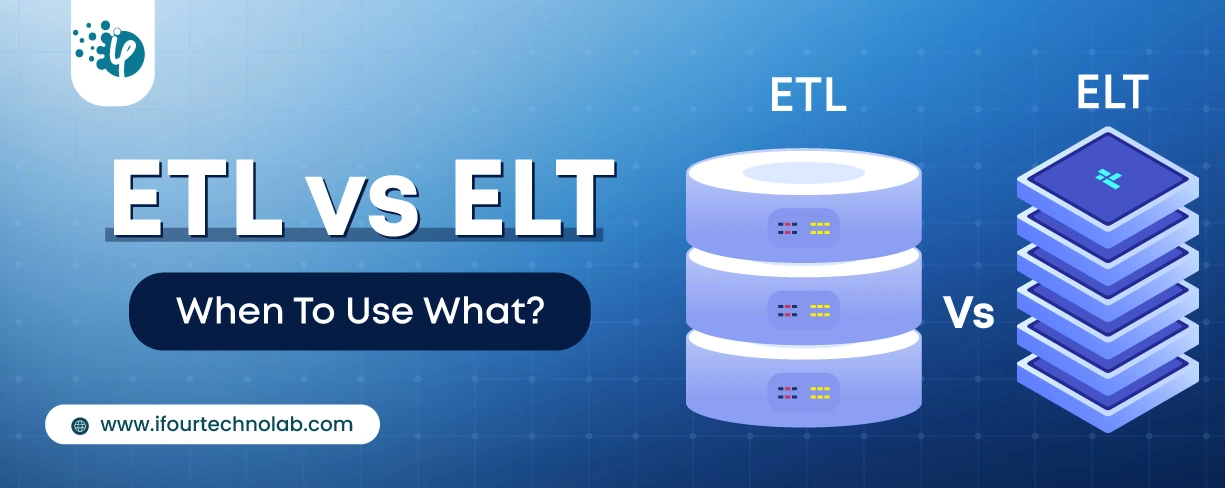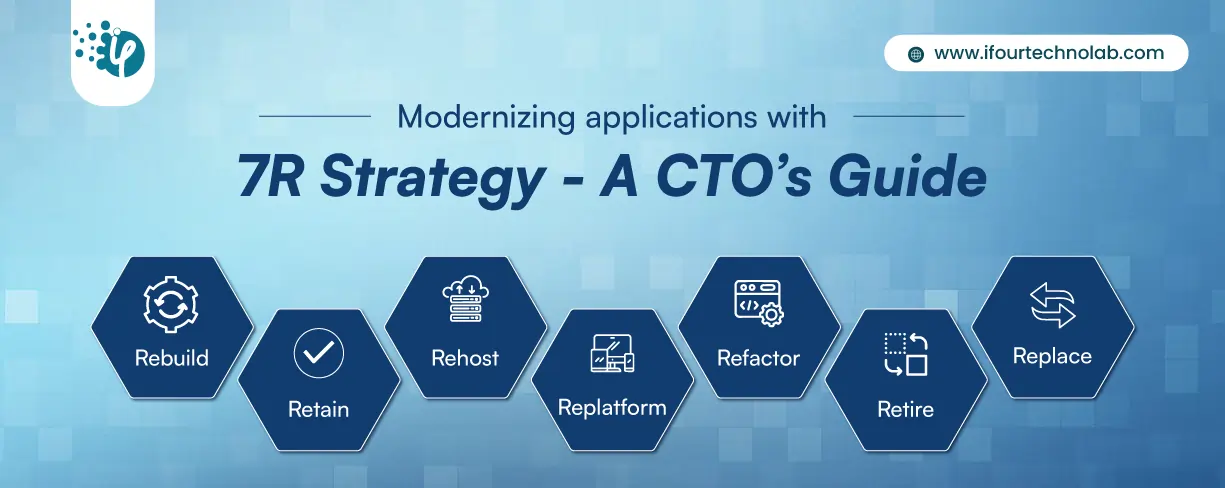How to Do Forecasting in Power BI (Steps & Accuracy Metrics)
Remember our last guide - Power BI forecasting? It revealed things that truly blocks accuracy, both structural and situational. Now it's time to take the next step. Knowing Power...
Listening is fun too.
Straighten your back and cherish with coffee - PLAY !

E-Discovery is a crucial process for legal research enabling lawyers to find the digital evidence they need. It involves finding, collecting, and filtering e-data related to their legal cases.
Technology adoption continues to grow and so does the amount of data. Did you know, the eDiscovery market is expected to reach a massive $17.1 billion by 2027, which is roughly 53% of what is in 2022?
With this massive growth, law firms face the challenge of managing a huge volume of digital data. You need to navigate various tools and workflows to ensure they comply with legal regulations and work efficiently.
What if I told you there is a platform that would simplify your eDiscovery process by offering a user-friendly interface designed for seamless management? Microsoft Power Apps, a low-code development tool helps you build quick MVPs to deal with complications effortlessly!
With Microsoft Power Apps
Law firms need to handle eDiscovery tasks more quickly and with better precision. Power Apps for eDiscovery help them save time and assets, which is really important in their line of work.
Create your custom MVP with #1 Power Apps development company
In this blog, we will discuss how Power Apps simplify the eDiscovery process.
It doesn't matter if you're working with Power Apps or Microsoft Purview for eDiscovery; these essential steps are important to keep in mind.
You might be wondering how Power Apps can actually assist with E-Discovery if these steps seem so basic and well-known. Let me explain how it works.
Now the very first reason why use Power Apps for the eDiscovery process is that - it offers advanced filters that enable you to quickly identify key documents in seconds.
With a custom-built Power Apps application, you can search through large legal datasets and filter documents based on specific criteria.
Here are the steps for simplifying eDiscovery with Power Apps
Create workflows in Power Apps to handle repetitive tasks like tagging and sorting.
Build apps that connect to various data sources for easy document management.
Set up shared spaces for team members to review and update documents together.
Establish a system for storing and tracking documents with easy access to their history.
Power Apps being a critical component of Microsoft Power Platform offers strong security and streamlines eDiscovery, making it seamless and efficient.
Power Apps solves several legal challenges and helps you simplify things far more effectively. Now let’s learn how Power Apps can change the way of eDiscovery and make things simpler and more efficient for everyone involved.
Using a single platform for gathering and managing all data related to eDiscovery has many advantages for law firms. It makes the process easier by reducing the need for multiple tools, which can create confusion and errors. With everything in one place, teams can access and share information quickly, improving collaboration. For instance, a law firm can easily find all relevant emails and documents for a case, ensuring nothing is missed.
A large corporate law firm can integrate Power Apps with its legal practice management system to work on e-discovery data. What’s amazing about MS Power Apps is it offers centralized data storage and collection. This way legal firms can cut the time required to collect evidence by 30%.
Similarly, a smaller firm focused on intellectual property can use a centralized platform to gather data from different sources, helping them prepare better case reports and ultimately win a key patent dispute.
Automation can greatly improve the way data is categorized and labelled, making it much easier to retrieve later. By using algorithms and machine learning, law firms can automatically sort through large volumes of documents and identify relevant information based on predefined criteria. This not only saves time but also reduces the chances of human error in the classification process.
Hire Power BI developer to create your industry-specific dashboards
For example, an automated system can quickly label documents as "confidential," "relevant," or "not relevant," allowing teams to focus on what truly matters.
A law firm can implement an automated tool that classifies thousands of documents within hours, a task that would have taken weeks if done manually. This enables them to prepare for a trial much faster.
Another example is - a firm can use automation to tag emails and attachments related to specific cases. This way their team can find critical information quickly during discovery. These improvements increase efficiency and ensure that important details aren't overlooked.
Advanced search capabilities, including filters and tagging, play a vital role in helping law firms quickly locate relevant information during eDiscovery. By using specific search filters, such as date ranges, document types, and keywords, teams can narrow down large datasets to find exactly what they need.
Tagging documents with relevant labels further enhances this process, allowing for quick access to grouped information. For instance, a legal team can filter for all documents related to a particular case or client, saving time and effort.
A litigation firm can use a custom Power App application to search through large datasets and filter documents based on specific criteria. This enables lawyers to prepare for negotiations swiftly.
Another firm implemented a tagging system that categorized documents by issue type, making it easy for attorneys to find relevant materials for their specific cases. These tools not only streamline the search process but also improve the overall efficiency of eDiscovery efforts.
Automating routine eDiscovery tasks can save significant time and reduce errors for law firms. By using automated workflows, tasks like data collection, document review, and report generation can be handled more efficiently. This allows legal teams to focus on higher-value activities, such as strategy and case preparation, instead of getting bogged down in repetitive tasks.
For example, one law firm can automate the document review process by using software that flags important files for review, cutting down the time spent on manual checks by 50%. Another law firm can set up automated notifications for key deadlines, ensuring that nothing is missed during the eDiscovery process. These improvements can enhance productivity and minimize the risk of human error, leading to more accurate and effective outcomes.
Automate your workflows seamlessly with Power Automate consulting services
Connecting to various data sources, such as email servers and cloud storage, is essential for efficient eDiscovery. Modern tools like MS Fabrics, Tableau or Power BI make it easy to integrate these sources, allowing law firms to quickly gather all relevant information without manual effort. This seamless connection means that teams can access data from multiple platforms in one place, streamlining the entire process.
For example, a law firm can link its email server directly to its eDiscovery platform, enabling it to automatically pull in all relevant emails for a case without manual searching.
Another firm can integrate its cloud storage solutions, allowing quick access to important documents stored online. These integrations can save time and ensure that no critical information is overlooked during the discovery process.
Having customizable dashboards that provide real-time updates and analytics offers significant advantages for law firms during eDiscovery. These dashboards allow teams to monitor progress, track deadlines, and analyze data briefly, helping them make informed decisions quickly. With visual insights into ongoing tasks, firms can identify potential issues before they escalate, ensuring a smoother workflow.
Read More: Top 10 Technology Trends in Legal Industry
For example, one law firm can use a dashboard to visualize the status of document reviews, enabling them to see which files are pending and which are completed in real-time.
Another firm can customize its dashboard to track key metrics, such as the number of documents collected and reviewed, helping it manage its resources more effectively. These dashboards can enhance efficiency and keep teams aligned throughout the eDiscovery process.
Collaboration tools like Microsoft Teams, Skype, Slack, etc. are essential for enhancing communication and teamwork during the eDiscovery process. These tools enable legal teams to share documents, discuss strategies, and coordinate efforts seamlessly, regardless of their physical locations. By facilitating real-time communication, teams can address issues quickly and keep everyone informed.
Examples:
For example, one law firm can implement a cloud-based platform that allows team members to comment on and annotate documents in real-time, improving their ability to collaborate on case strategies.
Another firm can use a project management tool to assign tasks and track progress, ensuring that everyone is aligned and deadlines are met. These collaboration tools can streamline the eDiscovery process and foster a more connected and efficient team environment.
Visualize your Legal data with Power BI consulting services
Security features are crucial for ensuring safe data sharing during the eDiscovery process, especially when collaborating with internal and external teams. Robust encryption, access controls, and secure authentication methods help protect sensitive information from unauthorized access. These measures ensure that only authorized personnel can view or share data, maintaining confidentiality throughout the process.
Power Apps Security Examples:
For example, one law firm can utilize a secure file-sharing platform that encrypts documents and requires multi-factor authentication for access, safeguarding client information during collaboration with outside experts.
Another firm can implement strict access controls, allowing only specific team members to view certain sensitive documents, which helps prevent potential data breaches. These security features can protect valuable data and build trust among clients and partners.
Read More: 15 Benefits of Power Apps for CTOs
Detailed audit trails are essential for maintaining compliance with regulatory requirements during the eDiscovery process. These logs track all actions taken on documents, including who accessed them, what changes were made, and when these actions occurred. This transparency helps law firms demonstrate adherence to regulations and provides a clear record for any audits or legal inquiries.
Examples
For example, one law firm can use an eDiscovery platform that generates comprehensive audit logs, allowing them to easily verify compliance during a regulatory review.
Another firm can implement a system that automatically records all document access and modifications, which can prove invaluable during an investigation, ensuring they can provide clear evidence of their compliance efforts. These audit trails can enhance accountability and protect firms from potential legal repercussions.
Template-based workflows are a powerful way to accelerate the eDiscovery process by providing pre-built frameworks for common tasks. These templates streamline repetitive actions, such as data collection and document review, allowing legal teams to quickly set up and execute their workflows without starting from scratch. This not only saves time but also ensures consistency and accuracy throughout the process.
Solve your complex needs with Vue JS development company.
For example, one law firm can use a set of pre-built templates for common case types, enabling them to initiate eDiscovery procedures quickly.
Another firm can adopt a template for document review that includes standard criteria and tagging options, which improves efficiency and reduces errors in classification. These template-based workflows can help legal teams respond faster to client needs while maintaining high-quality standards.
A streamlined eDiscovery process can significantly reduce operational costs for law firms by increasing efficiency and minimizing resource use. By automating routine tasks and improving collaboration, firms can handle larger volumes of data without the need for additional staff. This leads to lower labor costs and less time spent on each case.
Example
For example, one law firm can implement an automated eDiscovery platform that can reduce the time spent on document review by 40%, allowing them to take on more cases without hiring extra employees.
Another firm can use advanced search capabilities to quickly locate relevant information, cutting down on the hours billed to clients. These improvements can decrease costs and enhance the firm’s ability to deliver value to clients.
Quicker access to data significantly enhances a law firm's ability to develop effective case strategies. When legal teams can swiftly retrieve relevant documents and insights, they can analyze information more thoroughly and make informed decisions. This agility allows them to respond to developments in a case promptly and adjust their strategies as needed.
Power Apps Examples for Strategy Development:
For example, one law firm can implement an advanced eDiscovery platform that allows attorneys to access case-related documents in real-time, enabling them to formulate a stronger argument during negotiations.
Another firm can use streamlined data retrieval to quickly identify key evidence, which can play a crucial role in shaping their approach to a trial. These advantages can lead to more strategic planning and ultimately better outcomes for clients.
Automated checks and balances play a vital role in reducing legal risks during the eDiscovery process. By implementing automated systems that monitor compliance, track document access, and ensure proper handling of sensitive information, law firms can minimize the chances of errors and oversights that could lead to legal complications. These safeguards help maintain adherence to regulations and internal policies.
Get flawless hybrid apps with .NET MAUI App development services
For example, one law firm can use automated compliance checks to verify that all documents are reviewed and approved before sharing them, reducing the risk of unauthorized disclosures.
Another firm can implement an automated alert system that notifies attorneys of potential issues, such as missing deadlines or incomplete documentation. These proactive measures can significantly decrease legal risks and help firms maintain their reputation and integrity.
Using Power Apps to simplify and enhance the eDiscovery process offers numerous benefits for law firms. From automating routine tasks to providing real-time data access, Power Apps streamlines workflows and improves collaboration among teams. This leads to faster decision-making, reduced costs, and more effective case strategies, ultimately benefiting clients and enhancing overall efficiency.
Make eDiscovery easy with iFour’s Power Apps consulting services! Our team helps simplify your legal processes, saving you time and giving you an edge. Join hands with iFour, and let’s take your eDiscovery to the next level!
An eDiscovery tool is software designed to help organizations identify, collect, and analyze electronic data for legal cases, investigations, or compliance purposes. It streamlines the process of finding relevant documents and information in large volumes of digital data. eDiscovery software is commonly used by law firms, corporate legal departments, and government agencies to manage litigation, regulatory inquiries, and internal investigations efficiently.
Microsoft licenses that include eDiscovery features are primarily the Microsoft 365 E3, E5, and Business Premium plans. These licenses provide access to tools like Microsoft Purview eDiscovery, allowing organizations to manage legal holds, search for content, and streamline the eDiscovery process across Microsoft services such as Exchange, SharePoint, and Teams.
To access Microsoft eDiscovery, log into your Microsoft 365 account and navigate to the Microsoft Purview compliance portal. From there, you can select the eDiscovery option, where you'll find tools for creating cases, managing legal holds, and conducting searches across your organization's data. Ensure you have the necessary permissions or are assigned the appropriate role to access these features.
The main difference between eDiscovery and Content Search lies in their purpose and scope. eDiscovery is focused on legal and compliance needs, allowing users to identify, preserve, and analyze electronic data for legal cases or investigations. It includes features like legal holds and case management. In contrast, Content Search is a more general tool used to locate and retrieve content across Microsoft 365 services without the specific legal context, making it suitable for everyday data searches and management tasks.
Given below are some of the important use cases of eDiscovery:
Legal Support: Makes discovery faster and cheaper for arbitration cases, even across different legal systems.
Privacy Compliance: Keeps data secure across borders and automates modification for privacy rules.
Criminal Cases: Helps police and legal teams find key digital evidence quickly.
Public Info Requests: Speeds up handling of FOIA requests for better transparency.
Compliance and Audits: Manages compliance work, does internal audits, and preps for regulatory checks.
Given below are the essential steps for using Power Apps for E-Discovery:
Step 1: Secure Data Collection Power Apps protects file metadata during data intake.
Step 2: Drag and Drop Files Easily upload data with Power Apps’ secure transfer.
Step 3: Extract Metadata Make documents searchable with auto-extracted metadata.
Step 4: Limit Document Review Filter documents to reduce manual reviews.
Step 5: Review and Share Assess relevance and produce documents directly.
Step 6: Delete or Archive Data Choose to securely delete or store data when done.

Remember our last guide - Power BI forecasting? It revealed things that truly blocks accuracy, both structural and situational. Now it's time to take the next step. Knowing Power...

It's amazing to see how Data teams today are racing ahead - moving from traditional warehouses to cloud-native platforms, lakehouses, and real-time architectures. But in this rush,...

Think about the last time CTOs spent most of their time fixing old systems. Updates were slow, servers were expensive, and adding new features took time. Now, things have changed....